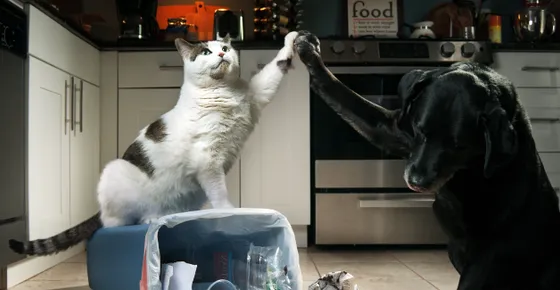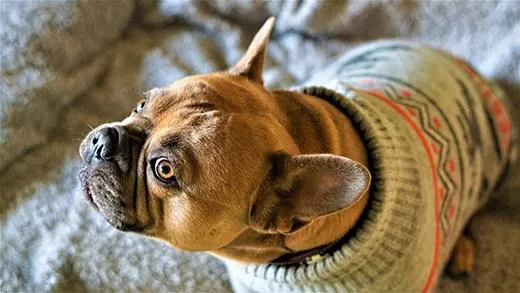Everything You Need to Know About Philodendrons and Dogs
If you’ve ever searched for “philodendron dogs,” chances are you have a curious pup and a love of houseplants. As any plant parent knows, keeping pets and plants coexisting peacefully can be tricky. In this article, I’ll cover everything you need to know about philodendrons and whether they’re safe for your furry friend.
Are Philodendrons Toxic to Dogs?
The short answer is: yes, most philodendron species can cause gastrointestinal upset if ingested by dogs. While philodendrons aren’t considered highly toxic, they do contain calcium oxalate crystals that can irritate the mouth and esophagus of curious canines. Signs of philodendron consumption include drooling, vomiting, diarrhea, and appetite loss.
From my experience as a veterinary nurse, even small amounts of ingestion can cause discomfort. The biggest danger is if a large piece of the plant is swallowed, as it could get stuck in the esophagus or intestines. That’s why it’s important to keep philodendrons and all houseplants well out of paw’s reach.
Philodendron-Proofing Your Home
If you want to continue enjoying your philodendron but have a plant-munching pup, there are some best practices to follow:
- Don’t let your dog have free rein of rooms with philodendrons. Keep plants high up or behind child safety gates.
- Consider potting philodendrons in heavy containers that can’t be tipped or adding top-heavy objects like rocks to discourage knocking over.
- Inspect for any dropped leaves or pieces your dog may try to eat before letting them in plant spaces.
At the same time, provide plenty of dog-appropriate chews and activities to occupy your pup when they’re with you. A tired dog is less likely to snack on houseplants!

What If My Dog Already Ate Part of a Philodendron?
If you catch your dog chewing on or swallowing part of a philodendron, there are a few steps to take:
- Keep the plant part and bring it with you to the vet to determine toxicity levels.
- Induce vomiting only if instructed by your vet and within the first couple hours of ingestion.
- Monitor your dog closely for signs of discomfort like drooling, vomiting, or diarrhea and contact your vet for advice.
- Consider following up with your vet even if no symptoms arise, as toxin levels may still cause internal irritation.
I’ve seen cases where inducing vomiting or giving activated charcoal helped dogs pass philodendron pieces without issue. But it’s always best to have your vet assess the specific situation.
Safer Houseplant Alternatives
If keeping philodendrons out of reach isn’t feasible or you’d rather avoid any plant toxicity risk, there are some dog-safe options to try instead.
Snake plants, aloe vera, pothos, dracaena, Chinese evergreens and peace lilies are non-toxic houseplants less appealing to dogs. During puppy-proofing drills, I’ve found spider plants to work well due to their foul taste. Succulents like echeveria and haworthia are also basically dog-proof.
Of course, every dog is different – but generally speaking, staying away from leafy greens and sticking to tactical defenses like high shelves is your safest bet. With some plant rearranging or temporary storage, you too can keep your home
plant-filled and furry friend-friendly!

Final Thoughts
In summary, while philodendrons can cause stomach upset if ingested, there are precautions you can take to minimize risk to your curious canine compadres. With diligent supervision, strategic philodendron placement high or behind barriers, and puppy-proof training, you may be able to coexist peacefully. But safer non-toxic alternatives are the foolproof choice if you have serious plant or pet safety concerns.
Hope this helps provide insight into your pup’s plant peril preferences. Let me know if any other questions come up – and please keep all houseplants and dogs happy and healthy! You never know what strange associations our animal antics might awaken online.
Choosing a Philodendron Variety
| Variety | Description | Care Level | Size |
|---|---|---|---|
| Philodendron hederaceum | Heart leaf philodendron, one of the hardiest and fastest growing varieties. | Easy | Can reach 6-12ft |
| Philodendron micans | Velvet-leaf philodendron, leaves have a velvety texture. Prefers bright, indirect light. | Moderate | To 4ft |
| Philodendron bipinnatifidum | Lacy tree philodendron, foliage resembles a lacy fern. Tolerates low light. | Easy | To 6ft |
| Philodendron scandens oxycardium | Split leaf philodendron, deeply lobed leaves known for their splits and tears. Fast growing. | Easy | To 20ft as a vine |
| Philodendron selloum | Thermometer plant, leaves have intricate markings resembling a thermometer. Slow growing. | Moderate | To 6ft |
FAQ
-
What is a philodendron dog?
Basically, a philodendron dog is a type of houseplant that kinda looks like a puppy or a dog. The leaves are shaped like paws or faces so it gets that name.
-
Do philodendron dogs bark or bite?
Of course not! Even though they look like dogs, philodendron dogs are just plants. They don’t make any noises or have teeth. They photosynthesize like other houseplants.

-
How big do philodendron dogs get?
Philodendron dogs can grow to be a decent size depending on how much light and water they get. Most varieties will reach about 2-3 feet tall and wide after a few years. But I’ve heard of some stunning specimens that were over 6 feet!
-
What kind of care do they need?
In general, philodendron dogs are pretty low maintenance. They like bright, indirect light and moist but well-draining soil. Be sure not to overwater – their “paws” will start to look droopy if they’re soaked. Occasional fertilizer in the growing season helps too.
-
Are philodendron dogs toxic to dogs?
While their name may be misleading, philodendron dogs are toxic to actual dogs if eaten. The sap can cause mouth irritation. So if you have a furry dog at home, you may want to display your philodendron up high where pup can’t reach – better safe than sorry!
-
What kind of environments do they thrive in?
Philodendron dogs are super adaptable as houseplants go. They’ll do well in fairly bright locations, perhaps on a table near an east or west window. However, at the same time they can tolerate low-light conditions better than some other plants. Their leaves may get lankier in the shade but the plant will survive. Most homeowners find they succeed in all different room types from living rooms to bathrooms.
-
Do they flower or fruit?
While their leaves resemble puppy faces or paws, philodendron dogs don’t produce blooms or fruits like some other tropical plants. Their role is to look cute and leaf out! Some types do put out aerial roots from the nodes which adds to their quirky charm, though.

-
Are philodendron dogs a good choice for beginners?
Overall I’d say the philodendron dog makes an outstanding choice for new plant parents. They aren’t super finicky about water or sun like certain finicky friends. Just give them occasional TLC and their leaves will bring smiles for years. So go ahead and adopt this puppy-plant – even if you “kill” other plants, this one will be pretty forgiving.
